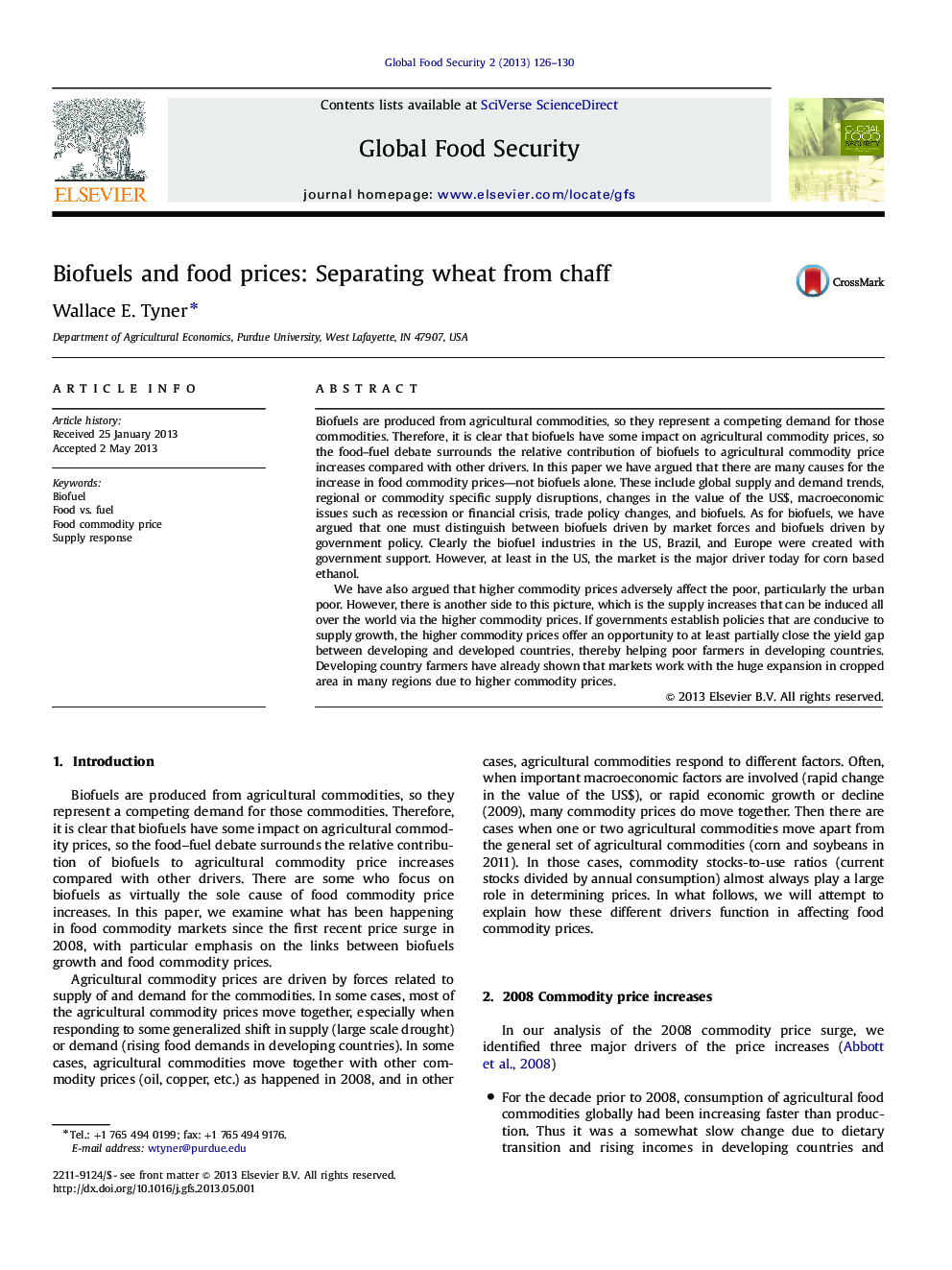| کد مقاله | کد نشریه | سال انتشار | مقاله انگلیسی | نسخه تمام متن |
|---|---|---|---|---|
| 1047610 | 945296 | 2013 | 5 صفحه PDF | دانلود رایگان |
• There are many causes for the increase in food commodity prices—not biofuels alone.
• Biofuels are driven by market forces or by government policy.
• Higher commodity prices adversely affect the poor, particularly the urban poor.
• Supply increases can be induced via higher commodity prices.
• Developing country farmers increased cropped area due to higher commodity prices.
Biofuels are produced from agricultural commodities, so they represent a competing demand for those commodities. Therefore, it is clear that biofuels have some impact on agricultural commodity prices, so the food–fuel debate surrounds the relative contribution of biofuels to agricultural commodity price increases compared with other drivers. In this paper we have argued that there are many causes for the increase in food commodity prices—not biofuels alone. These include global supply and demand trends, regional or commodity specific supply disruptions, changes in the value of the US$, macroeconomic issues such as recession or financial crisis, trade policy changes, and biofuels. As for biofuels, we have argued that one must distinguish between biofuels driven by market forces and biofuels driven by government policy. Clearly the biofuel industries in the US, Brazil, and Europe were created with government support. However, at least in the US, the market is the major driver today for corn based ethanol.We have also argued that higher commodity prices adversely affect the poor, particularly the urban poor. However, there is another side to this picture, which is the supply increases that can be induced all over the world via the higher commodity prices. If governments establish policies that are conducive to supply growth, the higher commodity prices offer an opportunity to at least partially close the yield gap between developing and developed countries, thereby helping poor farmers in developing countries. Developing country farmers have already shown that markets work with the huge expansion in cropped area in many regions due to higher commodity prices.
Journal: Global Food Security - Volume 2, Issue 2, July 2013, Pages 126–130
